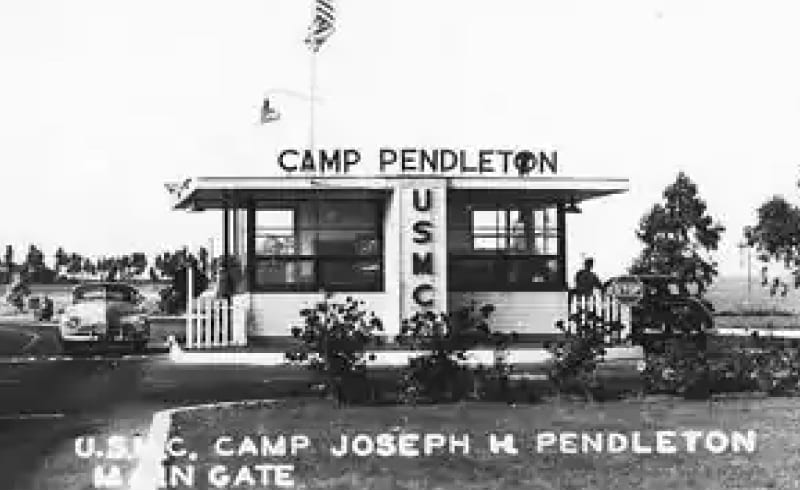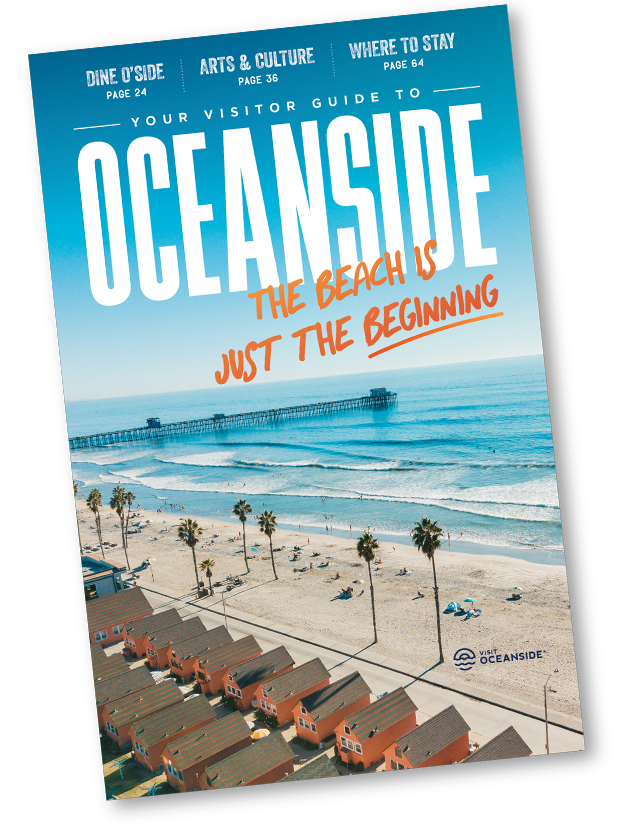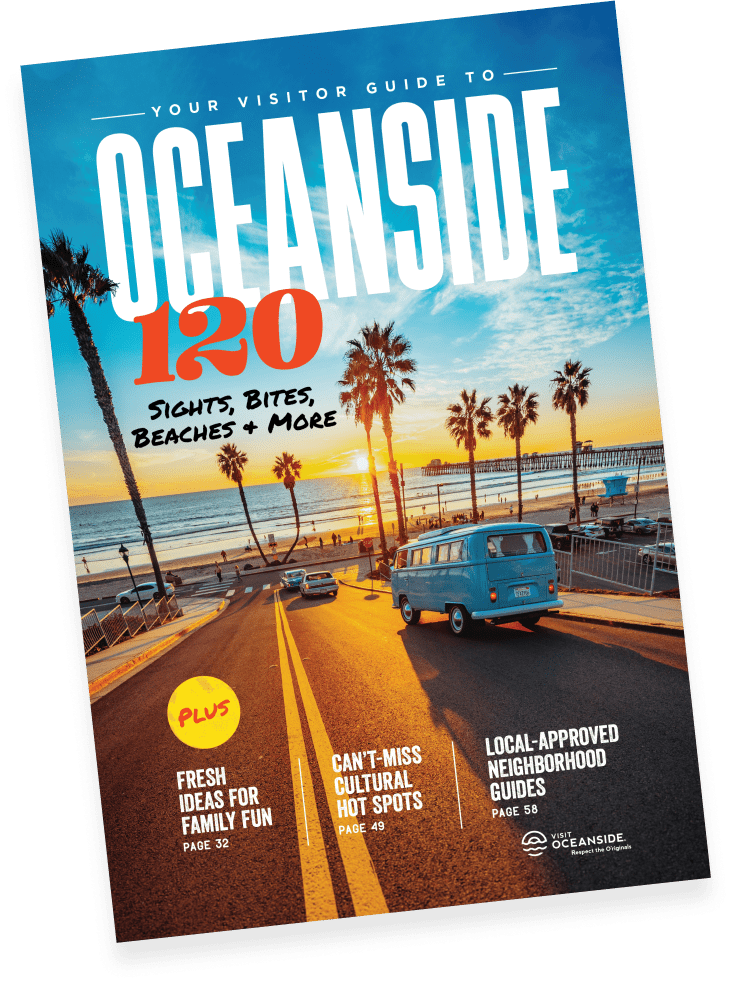Landmarks define O’side from Mission San Luis Rey to the “Top Gun” house.
The indigenous people whose land became Oceanside were called “Luisenos” by the Franciscans who founded the Mission San Luis Rey in 1798, following the arrival of the Spanish explorer Portola in 1769. The mission became the center of colonial activity, rooting agriculture in the San Luis Rey Valley. A century later, prosperous ranching and farming families sought retreat from the heat and built the first homes and infrastructure on the coast. Today, O’side has beautifully preserved landmarks and neighborhoods from a range of eras ready to transport you back in time.
Known as the “historian” of Oceanside, Kristi Hawthorne has spent four decades with the Oceanside Historical Society, serving as president since 2002. Through her blog, books, and even downtown historical walks, she tells the stories of the characters, landmarks, meaningful milestones, quirks, and charms that make O’side so o’riginal. Wanna go deep into O’side history? Kristi is your O’sider.
In the 20th century, O’side developed rapidly, opening the Oceanside Library and Oceanside High School before 1910, when the Oceanside Pier was already on its third iteration. Today, historically-significant, story-telling buildings from the 1880s sit side-by-side with modern construction, giving O’side its quirky charm.
Surfing culture is vibrant and alive in O’side. Since 1986, its history has been celebrated at the California Surf Museum through iconic memorabilia bringing the sport’s joy, skill, culture, and technique to life. Browsing the museum, find the timeline of waveriding expressed through vintage surfboards and other artifacts and peruse mixed media exhibits honoring some of the icons who have made the sport great, including O’siders like Donald Takayama.
Within months of the townsite first being laid out in 1883, O’side was being marketed as a seaside resort and trains began arriving bearing visitors from inland San Diego and San Bernadino counties. In 1884, swim culture arrived via a wooden stairway providing surf access from the bluffs. And by the turn of the century, O’side was known for its beaches, elegant hotels, wharf, opera house, and bath house. In the 1950s and 60s, Oceanside epitomized SoCal surf culture for a nation obsessed with endless summer, and in the 80s, one of the town’s original structures, the Graves house, was immortalized in “Top Gun,” bringing history full circle. Today, we’re a top destination for those seeking epic weather and laid-back vibes.

Located on O’side’s northern border, the Camp Pendleton military base is also a microcosm of California history. Its coastal areas, virtually unchanged since the 18th century—when the land was taken from the indigenous people who came to be called Luisenos—are home to endangered species like the Pacific pocket mouse, while in the highlands, you’ll find wild bison, descendants of a herd gifted to the base in 1973. Passing through Spanish and then Mexican rule, by 1863, the land encompassing Camp Pendleton was a thriving cattle ranch, purchased by the U.S. Marine Corps in 1942 to establish a west coast training base, the vision of its namesake, Major General Joseph Henry Pendleton. The largest military base in California, today Camp Pendleton is a training ground for various tactical forces across all the armed forces, with a particular focus on infantry and amphibious sea-to-shore training.






